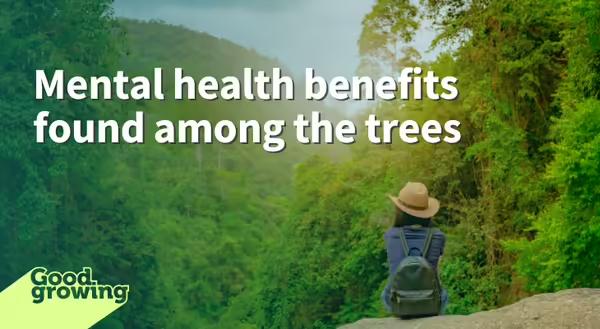
As May flowers begin to bloom and we celebrate the arrival of spring, we also turn our attention to Mental Health Awareness Month, a crucial period dedicated to breaking the stigma surrounding mental health and promoting well-being. During this time, we acknowledge the highs and lows that life can bring, acknowledge the prevalence of mental health conditions, and seek to create spaces that provide support to those who need it.
As a human, I’ve experienced emotional highs and lows. As a lifelong gardener and outdoor enthusiast, I have experienced the comforting and restorative power of nature. My experience is not an isolated occurrence or an accident, it is evidence to me that a growing body of research that points to the healing benefits of nature is on the right track. Perhaps you have also experienced the healing power of nature?
Peer-reviewed research papers have been published that indicate exposure to nature can be associated with improved well-being, increased happiness, positive social interactions, and relationships with a decrease in feelings of mental distress. The collective body of research available about nature exposure and wellness is growing, evolving, and complex. Not all interactions with nature are equal nor is this a new concept.
Shinrin-yoku (forest bathing)
Shinrin-yoku, or forest bathing, is more than an ordinary walk in the woods. Originally practiced in Japan, shinrin-yoku is an emersion experience. Going for a walk in the woods or on a nature hike is an activity with a destination, a physical starting and ending point. Forest bathing is time in the woods with the intention of immersion within the ecosystem. The destination is achieving a physical, emotional, and spiritual connection with the woods.
Although recognized as having roots an ancient practice, shinrin-yoku was officially articulated in 1982 by the Japanese Ministry of Agriculture, Forestry and Fisheries, in part, to demonstrate the value of the forest beyond logging. Mental and physical health benefits of nature can have a profound impact on a person’s physical and mental well-being, adding emotional and economic value to life. Forest therapy outcomes have been show to include reduced levels of stress and anxiety, improved immune function, and lower symptoms of depression.
How to practice shinrin-yoku
Like any practice, regular, longer engagement with the experience will yield more benefits than occasional practice. Although this isn’t to say that fewer and shorter interactions with nature are not beneficial and encouraged, evidence suggests that as few as five minutes in nature can provide some health benefits.
Remember forest bathing is an experience, not a destination. Here are a few tips to practice shinrin- yoku on your next outing to the woods:
- Leave your devices behind (or at least turn them off) so they won’t be a temptation or distraction.
- Stand or sit still while you engage all your senses. Observe what you see but also what you hear, smell, and feel. Avoid thinking of your calendar or to-do list or inbox. Be present.
- Move slowly so you can observe all of nature’s details. Notice the variety of colors, different textures, objects of various scale, as many details as possible.
- Stay as long as you can. Two hours is considered a complete forest bathing experience but research has indicated that benefits can be experienced in as few as five minutes.
Good Growing Fact of the Week: More than one in five Americans live with a mental illness. In some cases, physicians are prescribing time outdoors as a way to treat conditions such as high blood pressure and depression.
Thank you for reading!
Sign up for our emails! Want to get notified when new Good Growing posts are available? SIGN ME UP
Give us feedback! How helpful was this information (click one): Very helpful | Somewhat helpful | Not very helpful